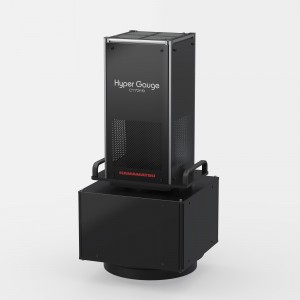
The phrase "optical interconnect" refers to various techniques used in integrated circuits to transfer data via light. Optical interconnects are an attractive solution for increasing bandwidth while reducing density and power consumption in high-performance data communication systems. Polymer optical waveguide technology enables the cost-effective, manageable integration of large optical interconnects into racks and onto motherboards.
Increasing Investment in Data Centers Interconnect and Fiber Optic Communication Drives the Global Market
According to Straits Research, “The global optical interconnect market size was valued at USD 11.63 billion in 2021. It is projected to reach USD 35.76 billion by 2030, growing at a CAGR of 13.29% during the forecast period (2022-2030).” An optical connection is one of the basic designs used in fiber optic communication networks. The number of data center service providers increased, and they all adopted server architectures based on optical technology. As data requirements continue to rise, service providers will remain to look for extensive fiber optic connectivity choices.
Additionally, hyperscale data centers are one of the leading investors in the market under scrutiny. Most hyper-scale data centers power online companies like Facebook, Google, Amazon, and Microsoft use these technologies. Millions of computers are housed in these hyper-scale data centers, which use fiber-optic networks to coordinate their efforts to manage the vast amounts of data consumers require. These factors are anticipated to drive market growth over the forecast period.
Growth of Data Communication and the Incorporation of Various Technologies Creates Tremendous Opportunities
Based on electronic packet switches, current data center networks experience an exponential increase in network traffic due to the growth of cloud computing. Optical interconnects are a potential substitute that offers high throughput, low latency, and low power consumption. Adopting optical interconnects in sizable data centers utilized by enterprises is significant. It is essential to have interconnected with high bandwidth and low latency that are power-efficient. Optical technology is only used for point-to-point connectivity in data centers, just as point-to-point optical links were only ever used in prior telecommunication networks (opaque networks). However, work on optically switched interconnects is currently ongoing.
Regional Analysis
Asia-Pacific optical interconnect market share is expected to grow at a CAGR of 14.40% during the forecast period. The continual advancements in communication technology are the main forces behind the market's expansion. China accounts for more than half of the annual global demand for optical cable. In addition to supporting enterprises, the Chinese government authorities also install fiber-optic systems to support the country's infrastructure, which includes airports, data centers, highways, railroads, and pipelines. Nokia received two contracts for its data center interconnect (DCI) network technology from the Chinese webscale giants Tencent and Baidu. Tencent and Baidu will strengthen their current strong cooperation with Nokia to increase their software-defined DCI infrastructure and obtain the dynamic, massive-scale optical bandwidth they need to support growing cloud operations in China and the US.
Europe is expected to grow at a CAGR of 12.28%, generating USD 7,268.64 million during the forecast period. Industrial and R&D firms from Europe's telecoms and microelectronics industries are creating a high-level strategic roadmap of core technologies for future connectivity systems and components targeted at the next generation of telecommunications networks and services. Additionally, it is projected that 5G will connect billions of devices, digitizing industries and enhancing social and economic development in various sectors. The strategy aims to lay the foundation for long-term technological superiority by Europe in the 5G era and beyond. It is therefore anticipated that these enhancements will favor the market's expansion in the region.
The US has been one of the significant contributors to the growth of the optical interconnect market due to its massive internet usage and growing communication infrastructure. These trends require better connectivity, which is increasing demand for optical interconnect connectors across the country. The region has many well-established retailers, which helps the industry grow. Molex, Inc., Amphenol Corporation, Cisco Systems, and Finisar Corporation. Through acquisitions, vendors consistently increase their market shares. For instance, Acacia Communications, Inc. was acquired by Cisco Systems, Inc. after most Acacia shareholders authorized the transaction. In addition, the United States is one of the top inventors and investors in the 5G market due to the high investment rate for the 5G rollout. Telecom companies, including AT&T (US) and T-Mobile, have started several efforts towards 5G services in the US., a developing market in Canada for communications infrastructure.
Competitive Players
The Top 10 players in the global optical interconnect market are 3M Company, Sumitomo Electric Industries Ltd, Molex LLC, Amphenol Corporation, TE Connectivity Ltd, Go!Foton Inc., II-VI Incorporated, Corning Incorporated, Cisco Systems Inc., and Huawei Technologies Co. Ltd.
Market News
- In April 2022, Sumitomo Electric Industries, Ltd., at the request of the Japanese Ministry of Health, Labour and Welfare, cooperated in providing technical guidance for engineers engaged in communications infrastructure at a human resource development seminar held at the National Polytechnic Institute of Cambodia (NPIC), a vocational school in Phnom Penh, Cambodia.
- In September 2022, Molex introduced first-to-market hybrid optical-electrical interconnects for co-packaged optics.




































 Back to News
Back to News



























